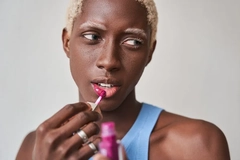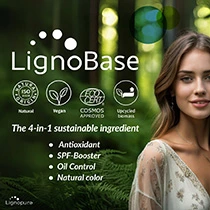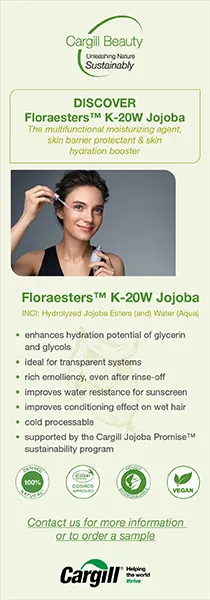SPF balancing act: Meeting the protection, sensory and eco-demands of sun care

Sun care is no longer solely about UV protection — consumers now expect it to have the same sensory appeal as skin care and be environmentally sustainable. The “skinification” of SPF has turned it into a daily ritual rather than a beach-day product.
Personal Care Insights speaks to Clariant and Brenntag about the demand for multifunctional, skin-benefitting sun care and the challenges of formulating these next-generation solutions.
“Multibenefit formulations dominate the market, with products claiming benefits that combine UV protection with various skin care advantages. Sensory innovation has become crucial as consumers expect sun care products to look and feel like premium skin care, without the traditional heavy, greasy textures,” says Sophia Kim, global marketing manager, Skin Care at Clariant.
Kevin Hedou, technical sales manager at Brenntag, adds: “There’s a big push toward cleaner, more sustainable products and long-lasting applications. We’re seeing more hybrid products, like tinted moisturizers or serums with SPF. There is also a growing demand for sunscreens linked to anti-aging benefits, as consumers increasingly focus on preventative skin care solutions.”
Diversified product formats
Integrating sun care into hybrid beauty formats is transforming the product development landscape.
“We’re seeing SPF ‘going everywhere’ in various formulation types, breaking down the traditional boundaries between sun care and other beauty categories. This integration reflects consumers’ desire for streamlined routines that save time while delivering comprehensive benefits,” says Kim.
Hybrid formats like sunscreen serums and SPF-infused foundations require formulators to rethink their approach to sun protection. These products must deliver effective UV defense while maintaining the primary sensory and functional attributes of their base category.
“This trend has elevated the technical challenges in formulation, as these hybrid products must achieve stability between UV filters and active skin care ingredients that might not traditionally coexist in the same formula. The texture expectations are also much higher — consumers expect these products to have skin care-like textures and benefits rather than the traditional sunscreen feel,” explains Kim.
This diversification has led to more sophisticated stabilization systems and delivery technologies that maintain SPF efficacy across various product forms, like gels, sticks, and patches. Multifunctional sun care products combine UV protection, skin care benefits, and sustainable innovation.
Multifunctional sun care products combine UV protection, skin care benefits, and sustainable innovation.
“Hybrid beauty products are a revolutionary development — formulators need to come up with sunscreens that not only protect from UV, but also hydrate, smooth, and correct skin tone,” adds Hedou.
“We also see a strong shift toward personalized multiblend solutions, such as head-to-toe products or versatile formulas for skin and hair applications, including hair serums and sprays with sun care benefits.”
“These hybrid products are increasingly expected to offer anti-aging protection from blue light, visible light, and pollutants. Balancing all these benefits while maintaining high sun protection is challenging.”
Formulation challenges
Beauty consumers want high-protection, sensory-appealing products that are better for the environment, but Hedou says that is not easy to achieve.
“Consumers expect more than just SPF 30 with UVA protection, which often means using fewer UV filters or turning to ‘greener’ alternatives. This can be a tough balancing act, but new technologies, like encapsulation systems, are helping make that easier.”
“High SPF formulas tend to feel thick or leave a white cast, especially with mineral filters like zinc oxide. To address this, formulators must carefully select emulsifiers and sensorial agents to create a pleasant texture without sacrificing performance. This may involve using new elastomer gels or biodegradable powders.”
Kim echoes that one of the biggest formulation challenges is achieving high SPF performance while maintaining pleasant sensory attributes. “Manufacturing complexity is also significant, as sun care products often require specialized processing conditions,” she says.
Clariant released its rheology modifier Aristoflex Sun to address these challenges. It enables simplified manufacturing processes while enhancing UV filter stabilization and improving SPF performance.
Environmentally-conscious formulations
Formulators must also navigate increasing environmental standards while maintaining performance efficacy, particularly as regulatory scrutiny of traditional UV filters intensifies globally.
Good water resistance is essential for sun care products, but many of the ingredients providing that resistance are not biodegradable. This exemplifies the challenge of finding eco-friendly options that maintain efficacy.
“There’s increasing pressure to remove ingredients like oxybenzone and octinoxate because of their potential harm to coral reefs. That’s driving innovation in finding new, sustainable alternatives,” says Hedou.
Natural ingredients often present challenges with pH, stability, and UV filter interactions, which can affect shelf life and overall performance.
“Regulatory approval for new UV filters can take years, and consumer expectations around terms like ‘reef-safe’ or ‘natural’ don’t always align with scientific reality. That makes it tricky to strike the right balance between perception and performance,” Hedou explains. Evolving global regulations drive innovation in UV filter technology.
Evolving global regulations drive innovation in UV filter technology.
Brenntag created Chromavive Elixir SPF 50 to tackle formulation and environmental sustainability challenges. The biphasic sunscreen is built on a refined microemulsion system, which is known for creating ultra-light textures, transparency, and a smooth, non-greasy feel on the skin.
Reef-safe innovation
Alongside the demand for sensory appeal are environmentally aware formulations.
“The ‘reef-safe’ trend is reshaping how we source ingredients and innovate in sun care. While there’s no standardized definition of what ‘reef-safe’ means, it has become a marketing essential, creating some key shifts,” says Hedou.
“With new UV filters hard to come by, there’s a greater focus on sustainable chemistry and biotech-based solutions. Brands are looking at eco-friendly ingredients, like biodegradable emulsifiers and film formers.”
Regulatory changes are accelerating this trend, with some traditional UV filters facing restrictions in certain markets, particularly those believed to impact coral reefs and marine life.
Companies are responding with innovations like improved rheology modifiers, which can enhance the performance of reef-friendly UV filters. This allows formulators to use lower concentrations while maintaining protection levels.
“Environmental considerations are now firmly embedded in the innovation process rather than treated as an afterthought,” says Kim.
Regulatory hurdles
Regulatory changes regarding approved UV filters are impacting sun care innovation pipelines globally.
“As certain UV filters face restrictions or additional safety assessments, companies must adapt their innovation strategies to ensure continued compliance while maintaining product performance,” says Kim.
“The limitations on some organic filters have pushed formulators to optimize formulations with approved filters, leading to innovations in ingredient combinations and stabilization technologies.”
Brenntag’s Hedou adds: “In Europe, the regulations on UV filters are quite strict, which limits the options formulators can work with. In the US, getting new UV filters approved is a slow process, but the Sunscreen Innovation Act gives us a little hope.”
“Right now, innovation is more likely to come from improving the filters we already have. But developing a new UV filter is a huge challenge due to cost and the regulatory hurdles.”
The regulatory landscape has also intensified focus on testing methodologies and claims substantiation.
 Formulators tackle the challenge of creating high SPF sunscreens with lightweight textures.As authorities review SPF testing protocols and water resistance claims, companies must invest in testing programs to ensure their products meet evolving standards. These changes have lengthened development timelines but led to more reliable consumer products.
Formulators tackle the challenge of creating high SPF sunscreens with lightweight textures.As authorities review SPF testing protocols and water resistance claims, companies must invest in testing programs to ensure their products meet evolving standards. These changes have lengthened development timelines but led to more reliable consumer products.
Regional differences
Clariant says the Asia Pacific region is currently leading the expansion of the sun care market, followed by Western Europe and North America. This geographic distribution of growth influences ingredient innovation and marketing strategies across the industry.
“In Asian markets, particularly, we’re seeing a sophisticated approach to sun protection that has long been integrated into daily skin care routines, emphasizing high protection alongside skin brightening and anti-aging benefits,” says Kim.
Clariant says the recent development of Aristoflex Sun responds to the global demand for improved texture while addressing the specific Asian market preference for lightweight, non-greasy formulations that still deliver high SPF.
“Marketing strategies must also adapt to these regional nuances. In Asia, positioning sun care as an essential daily anti-aging product resonates strongly, while Western markets might emphasize protection and sustainability credentials,” explains Kim.
Besides the Asia-Pacific region, Brenntag also names Latin America as an evolving market.
Western markets are increasingly adopting similar preferences but often with additional emphasis on natural and sustainable formulations.
Brenntag says its Innovation & Application Centers play a key role in the evolution of the sun care category. The centers focus on creating customized sun care solutions and providing advanced UV testing services. The company recently compiled a global sun care formulation booklet that showcases some of its latest high-performance concepts.
Looking to the future
Sun protection will be increasingly incorporated into everyday skin care routines in the future. The sun care market is tapping into other industry trends, such as personalization.
Clariant’s Kim expects this to accelerate further, “with increasing personalization tailored to specific skin types, activities, and environmental conditions.”
Hedou adds that there is also growing interest in neurocosmetics for sun care, such as new ingredients that protect the skin, help boost melanin production, and elevate dopamine levels for a more positive skin experience.
“These innovations are pushing the boundaries of what sun care can offer beyond just protection,” explains Hedou.
He also notes a future opportunity for climate-adaptive ingredients. For instance, there are sun care products that can adjust to different environments, such as air-conditioned rooms or those exposed to hot, humid outdoor conditions.
“These products can provide enhanced hydration, protection, and skin care based on your environment, helping consumers maintain healthy skin no matter where they are. We’ll see more of these kinds of advanced formulations based on second-generation UV filters and naturally derived sunscreens, as well as personalized formulas that offer more than just basic UV protection,” Hedou concludes.












